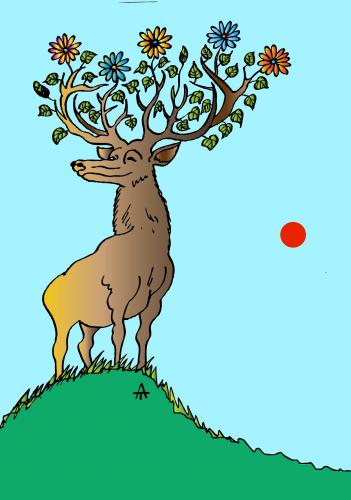
Rutting deer a problem in urban areas
Increasing numbers of deer living in towns and cities are causing havoc this autumn as the rutting wild animals get tangled up with garden fences, hedgerows and even washing lines.
Deer numbers in Britain are at their highest level since the Norman invasion with two million roaming the countryside thanks to warmer winters - meaning more survive - and the introduction of new species.However, stags at this time of year fight each to establish the alpha male - and are honing their butting skiills on everyday objects in urban areas.
They will attack flapping plastic bags stuck on a fence posts and hedges to "practice" fighting and then become entangled, The Deer Initiative has warned.
This can leaves them stuck - or with rubbish entwined in their antlers.
And they also charge fences or trees to remove itchy velvet from the antlers as they grow.
The stags roam around alone until they find another male, then they fight with their antlers, often to the death.
During this time stags are aggressive and have been known to charge dogs and even humans.
Red deer and fallow, that have larger antlers than introduced species like muntjac, are a particular problem.
The dominant stag will eventually re-join the herd to mate with the females.
Peter Watson, Director of the Deer Initiative, said because there are more deer in populated areas, where there is more human litter, they are more likely to get tangled in netting packaging or silage wrapping.
In the countryside it is common for deer to get antlers tangled in thorn bushes or even with each other.
He has seen deer with rotary washing lines stuck to their antlers.
“Deer are living closer than ever to urban areas. There are more deer therefore people are seeing more deer and more incidences [where animals become tangled].”
The Deer Initiative, which is a partnership between the Government, private sector and charities, is working with landowners to carry out culls in areas where the deer population is causing a problem.
Deer have been blamed for road traffic accidents and damaging woodland where rare native species like nightingales and bluebells live.
Currently around 350,000 deer are killed in Britain every year, mostly by rifle, but it could be increased to 500,000.
Warmer winters, no natural predators, a fall in the number of people hunting and year-round crops are blamed for the increase in deer numbers.












No comments:
Post a Comment